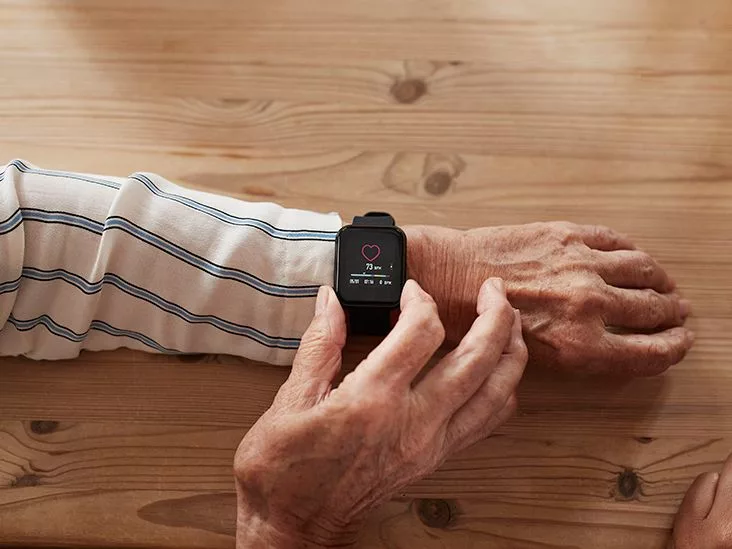Ever wondered which numbers really matter when it comes to keeping your ticker in top shape? The answer is simpler than you think: a handful of heart health metrics that you can check, log, and improve right from your kitchen table or living‑room floor. Below you’ll find the exact figures you should be watching, why they matter, and friendly, step‑by‑step ways to get them where you want them to be.
Grab a cup of tea, settle in, and let’s demystify the data together. By the end of this read you’ll know exactly what to track, how to interpret each reading, and which tiny daily tweaks can shave years off your heart age. Ready? Let’s go.
Why Track Metrics
Numbers aren’t cold, clinical walls – they’re personal clues that tell you how hard (or easy) your heart is working. The American Heart Association’s Life’s Essential 8 framework proved that people who consistently hit ideal ranges on key metrics can live up to a decade longer. That’s not just statistics; it’s a roadmap to a healthier, longer life.
Think of your heart health metrics as a car’s dashboard. You wouldn’t ignore the fuel gauge or the temperature warning light, right? Similarly, keeping an eye on blood pressure, cholesterol, resting heart rate, daily activity, and even your calculated heart age gives you early warnings before anything serious shows up.
Core Daily Metrics
| Metric | Why It Matters | Ideal Range | How to Measure | Quick Action Tip |
|---|---|---|---|---|
| Blood Pressure | High pressure stresses arteries → heart attack, stroke. | < 120/80 mm Hg (optimal) – 130/80 mm Hg (elevated) – ≥ 140/90 mm Hg (hypertension) | Home cuff, morning & evening, proper cuff size. | Cut added salt, add 30 min walk, practice deep‑breathing. |
| Cholesterol Levels | LDL builds plaque; HDL cleans it up. | Total < 200 mg/dL, LDL < 130 mg/dL (or < 100 mg/dL high‑risk), HDL > 60 mg/dL | Fasting lipid panel or non‑fasting non‑HDL test. | Eat more nuts/olive oil, add soluble fiber, discuss meds if needed. |
| Resting Heart Rate | Lower RHR = stronger heart pump & better fitness. | 60‑100 bpm (athletes 40‑60 bpm) | First‑thing‑in‑the‑morning, finger or chest strap. | Build aerobic base: 30‑min brisk walk, 5 days/week. |
| Daily Activity | Moves blood, lowers BP, improves lipids, glucose. | ≥ 7,500‑10,000 steps / day OR ≥ 150 min moderate / 75 min vigorous weekly | Smartphone pedometer, wearable, or manual log. | Break sitting every 30 min, add a 5‑min “walk‑break”. |
| Heart Age | Biological age vs. calendar age – instantly relatable. | Calculated from the 8 metrics; lower is better. | AHA calculator (embed link “according to the AHA”). | Improve any low‑scoring metric; each point can shave years. |
Each of these five core numbers forms a piece of the puzzle. When you line them up, the picture they paint is either a vibrant, low‑risk heart or a warning sign screaming for attention.
Supporting Health Numbers
While the core five give you the quick snapshot, two extra metrics deepen the story.
- Blood Sugar / HbA1c – Persistent high glucose erodes vessel walls. Aim for fasting 70‑99 mg/dL; HbA1c < 5.7 %.
- Body Mass Index & Waist Circumference – Extra weight hikes up BP, cholesterol, and glucose. Target BMI 18.5‑24.9 kg/m²; waist ≤ 40 in (men) or ≤ 35 in (women).
- Sleep Quality – Poor sleep spikes inflammation and BP. 7‑9 hours/night is the sweet spot.
These supporting numbers are like the supporting actors that make the leading cast shine. They’re easy to add to your routine, and they tighten the feedback loop that tells you whether your lifestyle changes are really working.
Action Plan Steps
Now that you know what to watch, let’s map out a realistic plan you can start tomorrow. No need for a drastic overhaul—just a series of small, sustainable moves.
- Pick a tracking week. Write down every reading for seven days. A printable template from the AHA Heart Health Tracker works great.
- Measure each metric at the right time. Blood pressure in the morning and evening, resting heart rate before you get out of bed, steps throughout the day, cholesterol during a routine lab visit.
- Compare to the ideal ranges. Highlight any numbers out of range – these are your “focus points.”
- Set micro‑goals. Instead of “lower blood pressure,” aim “reduce sodium by ½ tsp per meal” or “add 1,000 steps each afternoon.” Small wins keep motivation high.
- Re‑measure monthly. Trends matter more than a single reading. Plot your numbers on a simple line chart – you’ll love watching the downward slope on high BP!
- Ask a professional. If a metric stays stubbornly high after 4‑6 weeks of change, schedule a quick chat with your doctor or a cardiology nurse. Early guidance can prevent bigger problems later.
My friend Maya tried this exact flow last year. She started with a “one‑step‑at‑a‑time” mindset: first week, she logged her blood pressure and discovered it hovered around 138/85 mm Hg. She swapped her favorite salty snack for a handful of almonds and added a 15‑minute evening walk. By week four, her pressure fell to 125/78 – right into the “elevated” zone, and she felt more energetic. Maya’s story shows how a few intentional tweaks can tip the scales toward better heart health.
Expert Insights
According to Dr. Michael Blaha, a cardiologist at Johns Hopkins, “When patients focus on the five core numbers, they quickly see cause and effect. Lowering blood pressure by just 5 mm Hg can reduce stroke risk by 14 %.” His research aligns with the Johns Hopkins “5 Heart Numbers” study, which emphasizes steps, BP, cholesterol, glucose, and BMI as the most predictive metrics.
A recent AHA review of the Life’s Essential 8 (People who follow these 8 heart health metrics may live years longer) found that individuals scoring high on the eight components lived up to nine years longer on average. The key takeaway? Consistency beats perfection. Even modest improvements on a few metrics add up to big health dividends.
Quick‑Reference Cheat Sheet
Download our free one‑page PDF that summarizes each metric, its ideal range, and a weekly action tip. It’s perfect to stick on your fridge or pull up on your phone during a coffee break. (A simple email sign‑up delivers it instantly – we respect your privacy, promise.)
Wrapping It All Up
Tracking heart health metrics isn’t about obsessing over numbers; it’s about gaining clarity, confidence, and control over the most vital organ you have. By logging blood pressure, cholesterol, resting heart rate, daily activity, and your heart age, you create a personal health dashboard that tells you exactly where to steer.
Remember, the goal isn’t flawless perfection; it’s steady progress. Each extra step, each dash of less‑salt, each moment you check your numbers is a vote for a longer, happier life. So, what’s the first metric you’ll look at tomorrow morning? Grab a pen, jot it down, and share your journey in the comments – we’d love to cheer you on!


















Leave a Reply
You must be logged in to post a comment.